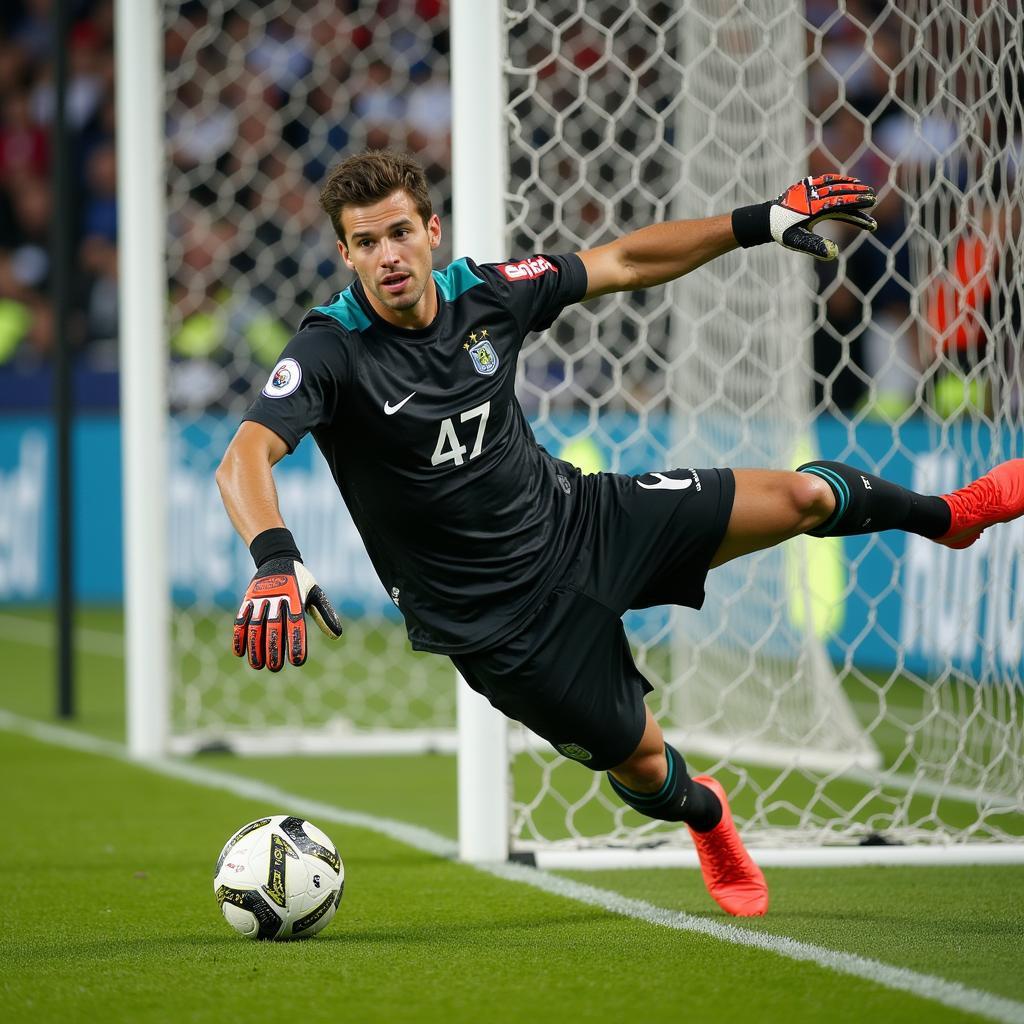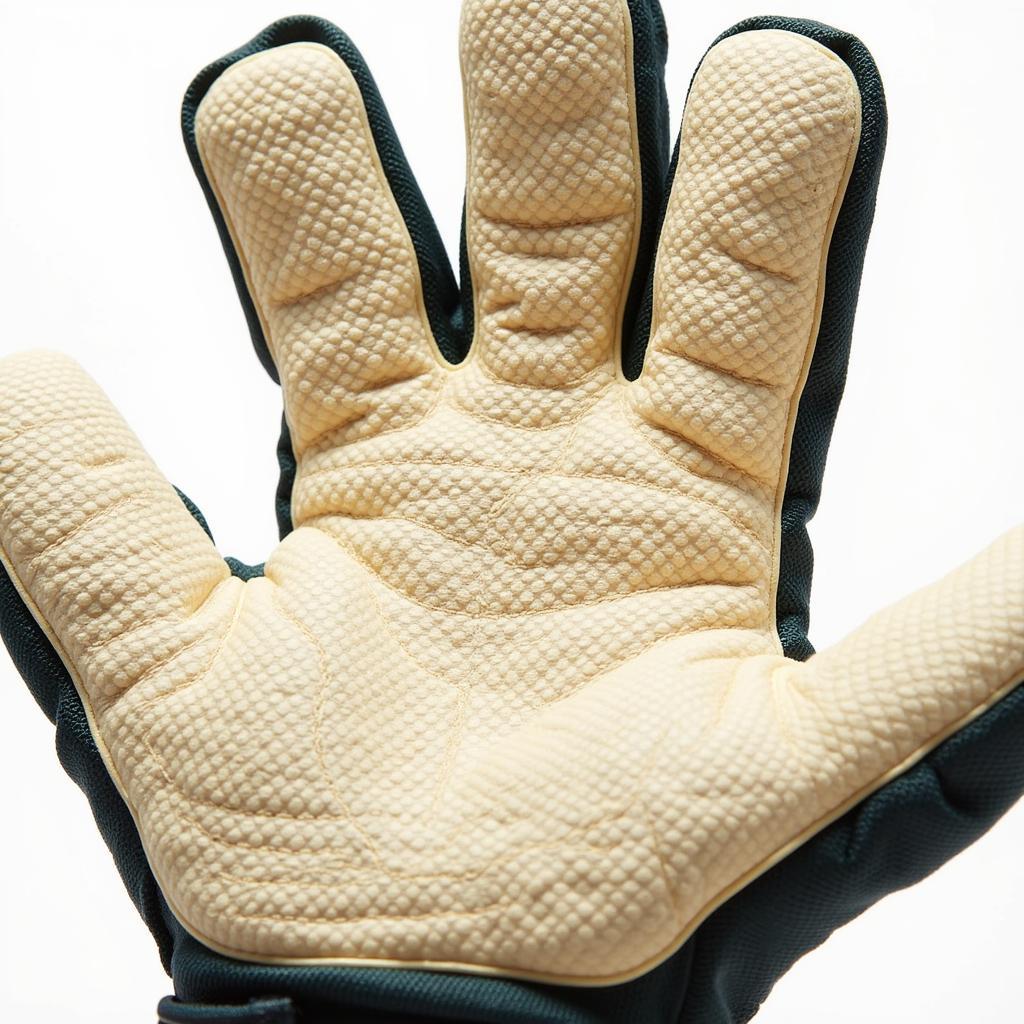Finding the Great Glove: A Guide to Soccer Glove Selection
October 12, 2024As a professional footballer, I know the importance of having the right gear, and that includes a Great Glove. Whether you’re a seasoned goalkeeper or just starting out, finding the perfect pair of gloves can significantly impact your performance on the pitch. This guide will walk you through everything you need to know about choosing the right soccer gloves for your needs.
 Soccer goalkeeper diving to make a save
Soccer goalkeeper diving to make a save
The Anatomy of a Great Glove
Before diving into the specifics, let’s break down the key components of a soccer glove and how they contribute to your game:
1. Palm: The Grip Master
The palm is arguably the most crucial part of the glove. It’s your primary point of contact with the ball, influencing your grip, control, and power. Different palm materials offer varying levels of grip and durability.
- Latex: The most popular choice for its exceptional grip, especially in wet conditions. However, it tends to wear out faster than other materials.
- PU (Polyurethane): Offers decent grip and impressive durability, making it a good option for training or playing on abrasive surfaces.
- Hybrid: Combines latex with PU or other materials to offer a balance of grip and longevity.
2. Cut: Finding Your Fit
The cut refers to how the palm is stitched to the backhand, impacting the glove’s overall fit and feel.
- Negative Cut: Provides a snug fit with the latex stitched internally, offering maximum ball-to-hand contact for enhanced control and feel.
- Flat Cut: A classic and comfortable cut with the latex stitched externally, providing a larger surface area for better shock absorption.
- Roll Finger Cut: Wraps the latex around the fingers for a tighter fit and increased ball control.
3. Backhand: Protection and Support
The backhand protects your hand from impact while providing support and flexibility. Look for materials like latex, mesh, or neoprene for comfort and breathability.
4. Closure: Secure and Comfortable
The closure system ensures a secure and adjustable fit. Common options include:
- Wrist Strap: Offers excellent support and adjustability.
- Elastic Bandage: Provides a snug fit and easy on/off.
What to Consider When Choosing Your Great Glove
Now that you understand the basics, consider these factors to find the perfect pair:
1. Playing Level and Frequency
- Beginner/Recreational: Opt for gloves with durable palms like PU or hybrid cuts for longer lifespan.
- Intermediate/Advanced: Prioritize grip and control with latex palms and cuts like negative or roll finger.
- Professional: Look for high-performance gloves with advanced features and materials tailored to specific playing conditions.
 Close up of a soccer glove's palm
Close up of a soccer glove's palm
2. Weather Conditions
- Wet Weather: Choose gloves with aqua grip latex specifically designed for optimal grip in rainy conditions.
- Dry Weather: Standard latex palms perform well in dry conditions.
- All-Weather: Opt for gloves with all-weather latex or hybrid palms that offer a balance of grip in various conditions.
3. Glove Size and Fit
A proper fit is crucial for comfort and performance. Measure your hand circumference and refer to the manufacturer’s size chart for guidance.
“Finding the right glove fit can make all the difference. If it’s too tight, it restricts your movement. Too loose, and you lose control.” – Peter Shilton, Former England Goalkeeper
4. Budget
Soccer glove prices vary widely depending on the brand, materials, and features. Determine your budget beforehand and explore options within your range.
Maintaining Your Great Glove
Once you’ve found your perfect pair, proper care and maintenance will prolong their lifespan and performance.
- Clean after use: Rinse off dirt and sweat with lukewarm water.
- Dry properly: Air dry your gloves naturally, away from direct sunlight or heat sources.
- Store correctly: Keep them in a cool, dry place to prevent moisture buildup and damage.
FAQs
1. What type of glove provides the best grip?
Gloves with latex palms offer superior grip, especially in wet conditions.
2. How often should I replace my gloves?
The lifespan depends on usage and care, but generally, expect to replace them every few months with regular use.
3. Can I use soccer gloves for other sports?
While you can technically use them, it’s not recommended. Different sports require specific glove designs and features.
4. What is the difference between negative and flat cut gloves?
Negative cut gloves offer a tighter fit and enhanced ball control, while flat cut gloves provide a more comfortable and traditional feel.
5. Are expensive gloves always better?
Not necessarily. While expensive gloves often boast advanced features, the best glove for you depends on your individual needs, playing level, and budget.
Explore More
Want to learn more about specific glove types and brands? Check out these resources:
Finding the great glove is a personal journey, but understanding your needs and the key features will guide you to the perfect pair. Remember, the right gloves can elevate your game, giving you the confidence to make those crucial saves and command the box.